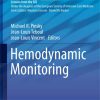Pulmonary Hypertension: ED Presentation, Evaluation, and Management
emdocs.net
Pulmonary hypertension (PH), characterized by increased pulmonary vascular resistance and pulmonary arterial pressure, is associated with significant morbidity and mortality. The disease is heterogenous, with varying demographics and underlying etiologies, affecting 15-60 million individuals worldwide.
PH is defined by a mean pulmonary arterial pressure of greater than 25 mm Hg by right heart catheterization or inferred by echocardiogram.
Although rare, with an estimated 5-15 cases per 1 million adults, recent studies identify PH-associated complaints as responsible for 64,000 ED visits over a 5 year period.2 In the United States, the most common cause of PH is left sided heart failure.
In 1973, the World Health Organization (WHO) defined a classification system for PH to design and implement international health standards. This was revised in 2013 to redefine groups 1-5.
Key Points:
– Myriad of chief complaints can be pulmonary hypertension; try to determine what is triggering the acute decompensation.
– Elevations in troponin and liver function tests portend a poor prognosis.
– Point of care ultrasound may be useful in guiding acute resuscitation, though evaluation of IVC may not reflect intravascular volume.
– Avoid hypoxemia and hypercarbia and maintain right ventricular preload support.
– Most patients will be admitted.
– Avoid intubating these patients if at all possible.
– Restart PAH meds if discontinued.
















